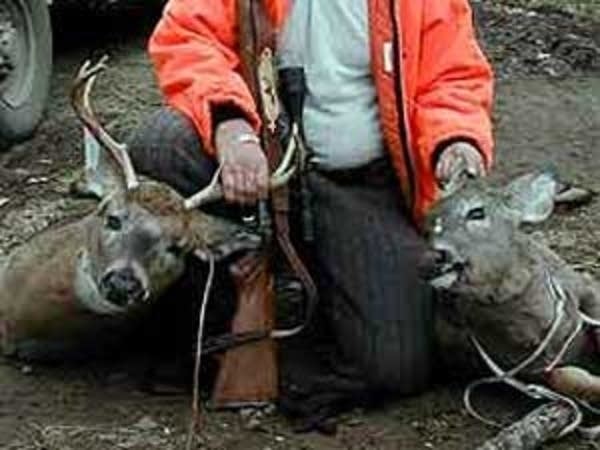Study: Lead spreads more widely in venison than first thought
Go Deeper.
Create an account or log in to save stories.
Like this?
Thanks for liking this story! We have added it to a list of your favorite stories.

The Minnesota DNR is warning deer hunters that lead fragments can travel farther in the meat than they might expect -- as far as 18 inches from a bullet's exit hole on an animal.
The DNR undertook the study because of concern about lead fragments in meat harvested from deer. It announced the results in advance of the early antlerless deer hunting season which starts this weekend.
In the study, DNR workers shot sheep carcasses with various types of bullets. The lead fragmentation was affected by the kinds of bullets and the weapons that fired them.
Shotgun slugs and muzzleloader bullets generally fragmented much less than high-powered rifle bullets. Copper or copper-jacketed bullets fragmented less than bullets designed to mushroom quickly.
Turn Up Your Support
MPR News helps you turn down the noise and build shared understanding. Turn up your support for this public resource and keep trusted journalism accessible to all.
Minnesota Department of Health spokesman John Stine says the greatest risk of eating venison contaminated with lead is to young children and fetuses.
"Our advice is to avoid consumption of venison that are taken by any lead-based ammunition for children under 6 and pregnant women, because of the effects it has on brain function and brain development," said Stine.
The DNR also says ground meat has more lead than solid cuts. It also says that rinsing meat may actually spread the lead fragments instead of removing them, and the pieces are likely to be too small to notice.
DNR officials say there's no way to offer guidance on how far to trim the meat around the bullet hole.
(The Associated Press contributed to this report)
Dear reader,
Political debates with family or friends can get heated. But what if there was a way to handle them better?
You can learn how to have civil political conversations with our new e-book!
Download our free e-book, Talking Sense: Have Hard Political Conversations, Better, and learn how to talk without the tension.




